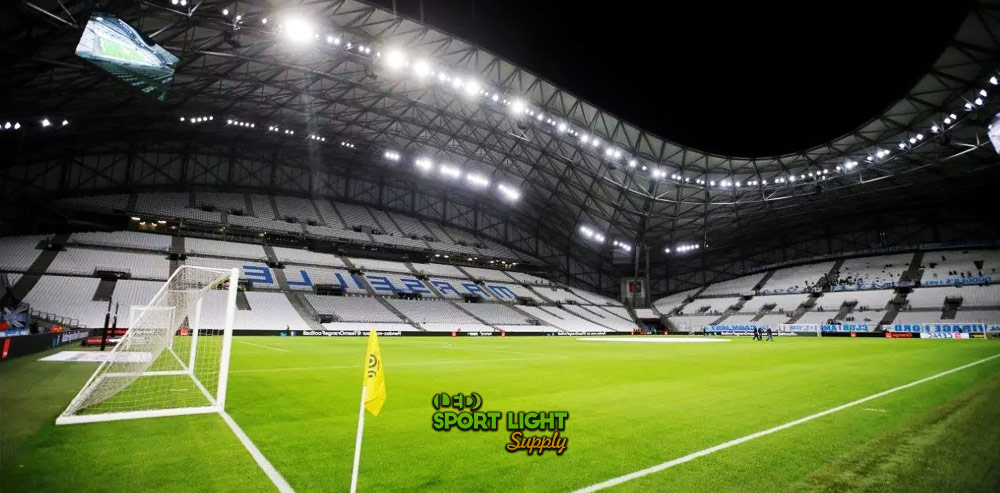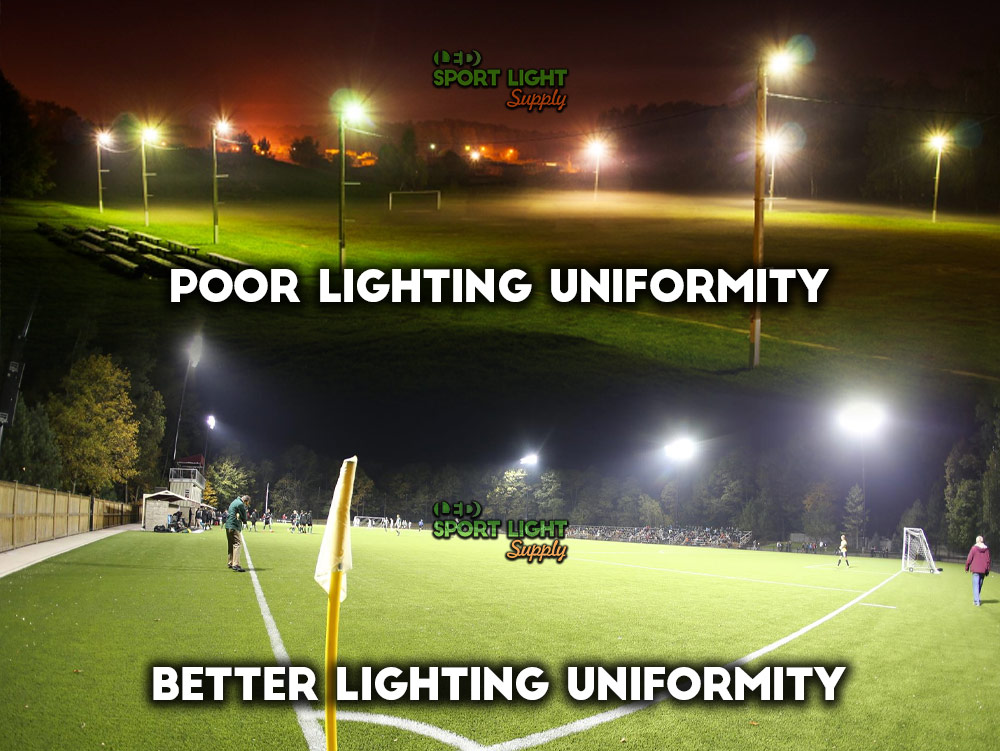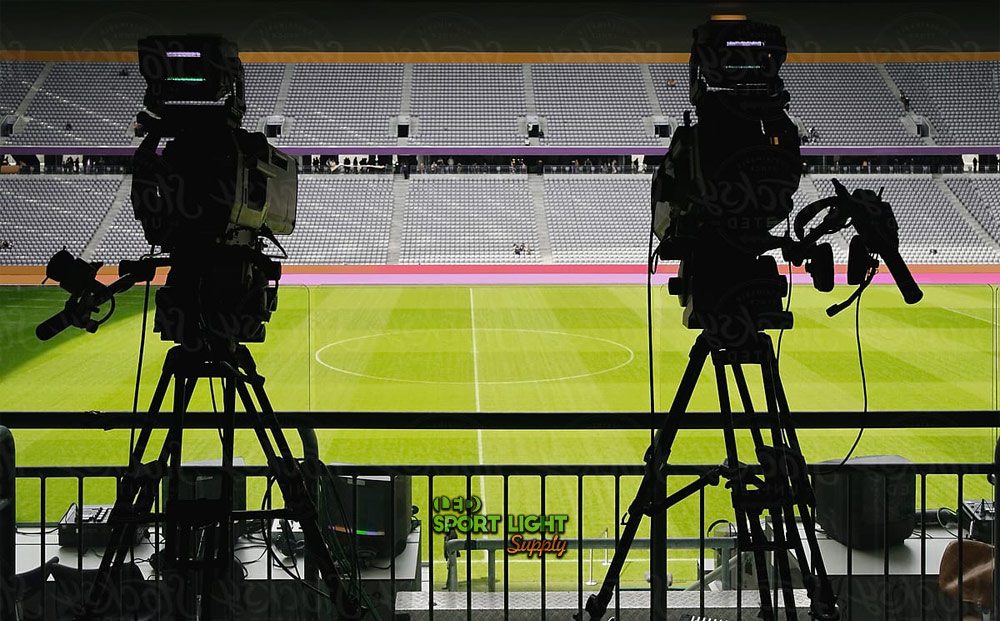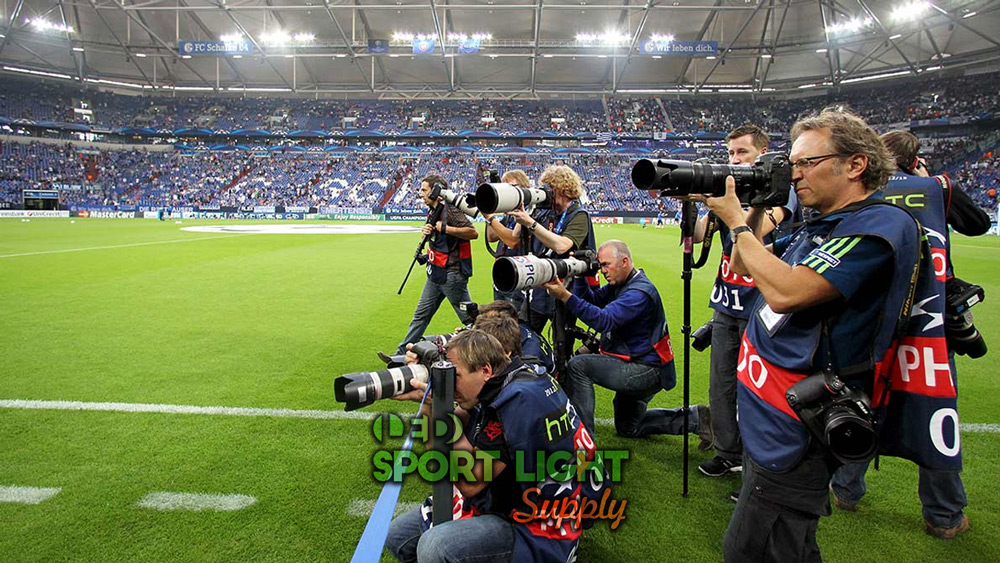There is a direct push from the Union of European Football Associations (UEFA) to include strict standards for field lighting. Otherwise known as the ‘pitch’, these new lighting levels are rigorously controlled to make way for television broadcasting. With 4K HDTV being more of a common sight these days, 8K is promising twice as much. Yet according to the UEFA lighting requirement, stadium lighting needs to conform to these ultra-high definition standard levels. What does this mean for sports lighting and how will it further change lighting levels for the NFL or FIFA?
Sports Lighting Standards
1. Horizontal illuminance standard
According to the new lighting conditions, field light tests are conducted to determine lighting levels over the soccer pitch. The field (pitch) is separated into a grid containing 96 points. This is based on a standard field measuring 68m x 105m (223′ x 344′). The horizontal illuminance test begins with a light meter facing upwards one meter above the pitch surface. Each section of the grid is then measured for a specific amount of light. These grids determine the Lux value requirement and added regulations.

2. Vertical illuminance standard
This test has four different light positions, in each direction of the pitch. It’s also measured from 1 meter above the pitch but is pointed perpendicular to the direction of light. Each record starts at 0, 90, 180, and 270 degrees of pitch lighting. This is also repeated across the grid among 96 points of the pitch ground. Each measurement needs to meet a light uniformity average of plus or minus 4, between all four light readings.
3. Lighting uniformity requirement
This is based on two measurements that determine the amount of light that’s over the entire pitch. The first is the U1 value that is what any spectator, player, or camera is exposed to. This often contains the levels of light from a minimum to a maximum range that are collected from the illuminance testing. The U1 defines a visual performance experience.
The second measurement is the U2 value that determines the visual exposure at the lowest level. This is related to CRI and levels of lighting design comfort that’s needed to view the pitch and players in-action.

4. Color temperature
Because television is changing so rapidly for the required amounts of light, Lumens plays a big role in color temperature. The average pitch rated for soccer is between 4200K-6200K and depends on the size of a stadium or arena. There are minor color adjustments that TV cameras will adjust to when changing from day to night shoots accordingly. The stadium lights are mandatory even in the daytime to ensure the complete coverage and even transitioning into the night.
5. TLCI standard
There are disadvantages of how CRI (color rendering index) is measured. It doesn’t translate well for the newer UHD (ultra-high-definition) 4K/8K cameras so a newer index is used instead for TV. It is called the TLCI (Television Lighting Consistency Index) and is a more accurate requirement for UHD cameras. Even though it’s not approved as an international standard for soccer stadium lighting, it does have high praise from the EBU. This is the European Broadcasting Union that often covers FIFA championships and games.
Just as CRI is measured for the human eye to judge comfort levels, TLCI measures the light level for cameras. This chart measures from 0-100 and is further divided into 5 different regulations by category. These range from bad to excellent when the TLCI is a higher number up the count.
6. Glare control
Glare is an issue that can affect spectators or athletes to varying degrees of discomfort. It’s not limited to the loss of visual abilities on the playing field. This glare is further defined as sports lights that are too bright, too large, or not shielded correctly. This can also relate to sunlight that is reflecting off surfaces (excluding sports lights) which lead to annoying glare. Under the UEFA, tests to determine glare are carried out by the CIE.
The International Commission on Illumination will conduct several extensive tests to determine glare issues. Not until the findings are published by the CIE with a glare rating report. This report is a scale of 1-10 with a lower number representing a better rating. Each direction within the stadium is observed from 0-360 degrees, measuring every 15 degrees in between.
7. Flicker factors
Because of the element of flicker issues that are caused by traditional sports lighting, TV cameras often reveal slow-motion flicker. HID, metal halide, and high-pressure sodium lights are still used extensively throughout older stadiums. When TV cameras use 300 frames per second to view slow-motion replays, this flickering can be an issue. Newer stadiums that use LED sports lighting do not experience a flicker problem for 4k or 8K TV cameras.
Even if high-speed slow-motion cameras are used, the rate of flicker is not detected from LEDs. Regular ballasts for incandescent lighting require square waveform ballast control to reduce flicker issues. TV cameras will further adjust to slow-motion flicker using computer technology to cancel-out flicker.

8. Player shadows
The UEFA has a very strict requirement on how sports lighting is placed on a pitch. Any stadium that uses a standard 4 corner high mast lighting design is simply not UEFA approved. It has become a golden standard that all hard shadows are removed from a player or object on the pitch. If they cannot be removed completely, the softening of shadows from all angles by 75% is recommended.
This is achieved by using lighting around the entire parameter of a stadium at selected degree angles. These angles include a variety of combinations which is outlined by the UEFA stadium lighting guide and their broadcasting regulations.
9. TV camera placement
Determining the best vantage points for TV cameras is also a strict guideline according to the UEFA. This includes a diagram that maps the outplacement of cameras throughout the field for lighting design. This further helps a stadium light their playing field with the best light in these viewing sections. Since modern sports activities are being broadcast across the globe, the level of detail must now meet 4K & 8K lighting levels.
While not every television crew sticks to a preplanned spot for setting up their cameras, this placement map is vital. This is where lighting levels are more optimal for the number of Lumens, CRI, and TLCI. For global matches that include FIFA matches and championships, stadiums that offer these levels of optimal light are preferred.





